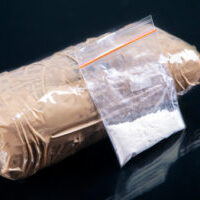Nova Scotia Mental Health and Addictions Plan
Nova Scotia announced plans to develop a mental health and addictions strategy in 2010. During 2011 the advisory committee met with more than 1200 Nova Scotians and reviewed best practices and other research to produce a Nova Scotia mental health and addictions action plan. The report Together We Can: The plan to improve mental health and addictions care for Nova Scotians was released in 2012 to serve as a guide for the next five years. This blog will look at this original report, as well as the Progress Update released in 2016. In Together We Can five priority areas were identified, with recommendations on how to move forward. Intervening and Treating Early for Better Results – With a Focus on Children and Youth The Nova Scotia mental health and addictions plan noted that 70% of mental illnesses begin before the age of 25, and early intervention can prevent bigger problems later in life. As such, one of the action points is to screen every child in Nova Scotia at 18 months of age to hopefully pick up any developmental delays to help foster a healthy childhood. Strongest Families, a 12-week phone-based program for children with behavioural problems that has already been implemented in some areas of the province, will be expanded throughout the province. SchoolsPlus is a service offered in 79 schools where children have access to mental health professionals at school. Shorter Waits, Better Care One of the biggest difficulties facing Nova Scotia mental health and addictions is expanding services to reduce wait times. Choice and Partnership Approach (CAPA) is supposed to see patients shortly after being referred in order to match them with the treatment they need. However, the action point does not adequately explain how this program will be faster than what is currently in place. There are not enough drug and alcohol rehabs to send people to in Nova Scotia. Peer support for those leaving a mental health or addiction treatment program in hospital and transitioning back to their regular life is suggested. Perhaps sober living housing units in underserved communities would be better suited to aiding a successful transition. There are a few more action points that are good ideas, such as more family support for those caring for people with mental illness or addictions. However, it seems to shift the burden of care from provincial structures to families and does not address wait times. Expanding the current toll-free line for the province so it is 24/7 is a good step forward though, as many in rural areas lack out of hours care. Aboriginal and Diverse Communities Most of the provinces we have looked at so far pay lip service to wanting to expand ‘cultural competencies’ and serve marginalized populations. However, Nova Scotia has some concrete ideas that if successful could truly make the mental health and addictions field more diverse and able to care for all its citizens. The committee suggests creating diversity implementation groups that are made up of the diverse populations themselves (LGBTQ, Francophone, First Nations, African Nova Scotians etc) to create guidelines on how best to deliver mental health and addiction services and programs. Most interestingly and different from the other provinces is that Nova Scotia is actively recruiting and promoting mental health and addiction careers within these diverse communities so that healthcare providers begin to mirror the true face of Nova Scotia. Working Together Differently The committee suggests improving access to housing, better support in the community, and bridging the gap from corrections to community life. These are all good suggestions but do not go into detail about how...
Toronto Recommends Decriminalization
Toronto’s Board of Health is recommending decriminalization of all illegal recreational drugs following a new report by the city’s medical officer. Dr Eileen De Villa, Toronto’s medical officer of health, has taken the last year to work with her team on the best way to tackle Toronto’s growing opioid concerns. The opioid crisis is most prominent in the west of the country, with Vancouver being hardest hit, however, fentanyl and other analogues are now more common in the eastern provinces. There were 303 opioid overdose-related deaths in 2017 in Toronto, a 63% increase from 2016. Nearly 4000 Canadians died last year from opioid overdoses. Dr Eileen De Villa says “drug use has always been with us, humans have always used drugs in one way, shape or form. The potential harms associated with any of these drugs is worsened when people are pushed into a position where they have to produce, obtain, and consume those drugs illegally.” De Villa and her committee have been reviewing scientific literature, conferring with other jurisdictions, and speaking directly with drug users and others for the past year. The main jurisdictions analyzed were Portugal, Switzerland, and Germany. De Villa stated “they are getting reduced drug use rates. They are getting minimized harm associated with drug use and ultimately better community health as a whole.” The results of that report were presented on Monday to the Toronto Board of Health. The recommendations outlined in the report, namely to force the federal government to take a public health rather than a criminal approach to drug use, were unanimously approved by the board. Due to this approval, the federal government has now been issued a letter informing it of the board’s recommendation. The board also asked De Villa to forward her report to Ontario public health boards, the boards of health in Canada’s 10 largest cities, and the Ontario Public Health Association. The Toronto Board of Health is not the first to recommend decriminalization across the spectrum of substances. At the Liberal National Convention held in April in Halifax this year, Liberal party members passed a resolution to address the opioid crisis through a public health approach. As well, the proposition to decriminalize small amounts of illicit drugs was passed. Despite building public pressure, as well as scientific data in favour, the Liberal elite is still against decriminalization, with both the PM and Health Minister dismissing the possibility. References: Toronto Board of Health to Urge Federal Government to Decriminalize Drug Use Toronto’s Medical Officer of Health Wants Feds to Decriminalize All Drugs for Personal Use The post Toronto Recommends Decriminalization appeared first on Canada Drug...
Nova Scotia Government Funded Drug Rehab & Alcohol Treatment Programs
For this Provincial Snapshot learn how to access Nova Scotia government-funded drug rehab and alcohol treatment programs. Outpatient Drug and Alcohol Treatment Like most of the other provinces we have covered so far, it is best to start with your primary care provider when looking for addiction treatment. Your family doctor can provide you with referrals to both public and private treatment programs. Find your closest outpatient Community Mental Health and Addictions Clinics here. Most of these clinics are located in hospitals or as part of a health unit. These clinics have a team of mental health and addictions professionals who provide outpatient services like assessment, diagnosis, and treatment, individual and group therapy, as well as support for families and community organizations. Government Funded Inpatient Treatment Nova Scotia only has approximately 2 government funded inpatient treatment programs. Unfortunately, these government-funded drug rehabs are usually only 21 days, and this often includes the time it takes to detox. This is not considered nearly long enough to have an impactful change on clients. While there are a few community-based addiction services, the bulk of resources are located in or close to Halifax, creating a disparity in access to services. It is commendable that Nova Scotia has created opioid replacement programs to help wean people off. However, there seems to be more funding going towards medication than counselling and other treatment options. Nova Scotia government-funded drug rehab and alcohol treatment is lacking, especially in regards to inpatient facilities. New facilities with the capabilities to treat people for longer periods of time would help reduce the current lengthy wait times and hopefully help clients be more successful upon leaving treatment. If you are struggling with a substance or process addiction and are looking for drug and alcohol rehab in Nova Scotia, please contact our specialist for more help. References: Community Mental Health and Addictions Clinic JMC 2018.06.19 The post Nova Scotia Government Funded Drug Rehab & Alcohol Treatment Programs appeared first on Canada Drug...
Health Canada Urges Caution Despite Drug Testing
Every summer across Canada thousands of people attend music festivals, and many of them will consume recreational drugs while there. In an effort to curb overdose deaths, Health Canada has released warnings and advice for festival-goers this season. Drug testing has become more common, especially in BC as the province works to reduce its staggering amount of overdose deaths. Health Canada urges people to test their drugs prior to using them, but wants users to exercise caution as no test is perfect. Drug Testing Strips At the end of 2017 Health Canada recommended fentanyl test strips to help drug users make educated decisions about their drug use. During tests undertaken by the department the strips always detected fentanyl, however could not always detect fentanyl analogues like carfentanyl. In BC, these fentanyl test strips have been available at the supervised-injection site, Insite since 2016 and were made available at more Downtown Eastside locations in 2017. Vancouver Coastal Health Authority said substance users at Insite whose drugs tested positive for fentanyl were 10 times more likely to reduce their dose. The positive benefits of these strips has meant they are now more widely available across the province. Music Festival Etiquette Health Canada wants revelers to know: Illicit drugs can be tainted with all kinds of dangerous substances, including fentanyl Do not mix drugs and alcohol, and do not leave your drink unattended Never use drugs alone, and check on your friends As well, the government wants people to know what an overdose looks like: Difficulty walking and talking Very small pupils Cold and clammy skin Extreme drowsiness or inability to wake up Choking, gurgling, slow or weak breathing Opioid Overdoses Fueled By Fentanyl Prescription opioids have recently been blamed in the media for the surge in opioid addiction and overdose. However, opioid related overdoses and deaths are still rising despite declines in prescriptions written and total opioids dispensed by Canadian pharmacies. Illegal fentanyl and carfentanyl continue to be the driving cause of overdose deaths. Last year opioids killed nearly 4000 Canadians, up 1000 from 2016. In 2017, fentanyl was associated with 84% of overdose deaths in BC. If you are attending a music festival this summer and plan to take drugs, check to see if the event has a drug testing station. Many do these days and they could save your life! However, use caution as not all testing methods can test for everything, especially the highly toxic carfentanyl. References: Canadian Government Offers Tips for Safer Drug Use as We Head Into the Summer Music Festival Season BC Expands Access to Fentanyl Testing, Asking Users to Check Their Drugs Information Update – Drug Use During Festival Season The post Health Canada Urges Caution Despite Drug Testing appeared first on Canada Drug...
Drug Fact Sheet: Cocaine and Crack Cocaine
This month’s Drug Fact Sheet is looking at cocaine and crack cocaine. Where did this drug originate and why is it still so prevalent? History Cocaine is derived from the coca plant, native to South America. Indigenous people of the area have chewed the leaf for centuries in daily life as well as a part of religious ceremonies. Cocaine was only isolated from the leaf in 1860 by a German chemist, but around the same time, other Europeans were beginning to experiment with its recreational uses. In the latter half of the 19th century, pharmaceutical companies quickly picked up on the anaesthetic properties and marketed the substance to doctors. However, many patients died of accidental overdoses in surgery and so it did not remain in favour. Criminalization The USA introduced legislation to criminalize the sale and use of coca and opium products in 1914. However, cocaine had a huge resurgence in the 1980s, which included the introduction of crack cocaine. Crack cocaine is produced by dissolving powdered cocaine in water and ammonia and boiling this mixture down until it is solid. This is then broken into “rocks” and sold to people to smoke. Smoking crack elicits a strong yet short high, making it even more addictive than cocaine. Crack is also cheaper than cocaine powder, and in 1985 a rock only cost $5 in most US cities. By the late 80s, many cities who saw a rise in crime and deaths related to crack use declared a “crack epidemic”. Physical Effects Short-term effects of cocaine are euphoria, increased energy, and heightened sensitivity to sound and touch. It can also reduce the desire for food and sleep. Cocaine’s effects are felt quickly; within a few minutes if snorting powder and almost instantly if smoking crack. However, its effects are short-lived, usually lasting from a few minutes to half an hour. The physiological effects include dilated pupils, constricted blood vessels as well as increased body temperature, heart rate, and blood pressure. Cocaine-related deaths are usually the result of cardiac arrest or seizures. The mixing of drugs like cocaine and alcohol or cocaine and heroin increases the chance of overdose and death. Long-term use of cocaine has lasting effects on the brain. Illicit drugs not only affect the pleasure centres of the brain, they also affect the brain pathways that respond to stress. Research has shown that increased stress leads to increased desire for cocaine among regular users. Cocaine also reduces the efficacy of the decision-making area of the brain, the orbitofrontal cortex. Lack of self-insight and inability to recognize and adapt to negative consequences of continued drug use are effects of the cortex’s lowered function. Treatment Almost all drug treatment facilities in Canada will be able to help you or a loved one with cocaine addiction. It is one of the most popular illicit drugs, so drug rehabs will have treated many people before with a similar problem. Please contact our specialist and they will work with you to find the right facility for you. References: History of Cocaine Cocaine JMC 2018.06.19 The post Drug Fact Sheet: Cocaine and Crack Cocaine appeared first on Canada Drug...
Drug Busts Throughout Okanagan Valley
While the opioid crisis has affected people across Canada, BC has been one of the hardest hit provinces. Many news stories focus on the problems in larger cities like Vancouver, but forget that other more rural centres are in the midst of the crisis too. The Okanagan Valley, a vacation hotspot in the Interior approximately 4 hours east of Vancouver, has long been known as part of the “Coke Highway” and is a conduit for drug running across the province. However, recent coordinated RCMP efforts across districts have lead to some major drug busts, stifling the supply chain. Recent Okanagan Drug Busts On June 22, Vernon North Okanagan RCMP arrested a woman they believed to be linked to a drug trafficking group operating in the area. As part of this investigation RCMP executed a search warrant in the Lake Country area and found cash, 523 street-level baggies of a heroin/fentanyl mix, 457 street-level packages of crack cocaine, and 82 street-level packets of methamphetamine. The woman was found with street-level packets of drugs and a large amount of cash when she was arrested. The RCMP estimate the value of the drugs seized to be $30 000 and believe they have made a dent to the local drug trade by taking out this higher level operation. A week later, Penticton RCMP’s Targeted Enforcement Unit seized a “significant quantity” of various drugs, as well as a handgun in Summerland. A man at the scene was arrested, and charged with three counts of trafficking in controlled substances and two firearms offenses. These police raids are welcomed by the area as many families have already lost loved ones to opioid overdoses. In fact, Kelowna leads the entire country in opioid-related hospitalizations. According to 2016-2017 data, Kelowna had 37.9 out of 100 000 people hospitalized due to opioid poisoning. By comparison Vancouver, considered one of the most problematic areas, only had 20. References: Police Arrest One, Find $30k Worth of Drugs in North Okanagan Bust Police Nab Drugs, Firearms Kelowna Tops Canada for Rate of Opioid Hospitalizations The post Drug Busts Throughout Okanagan Valley appeared first on Canada Drug...









